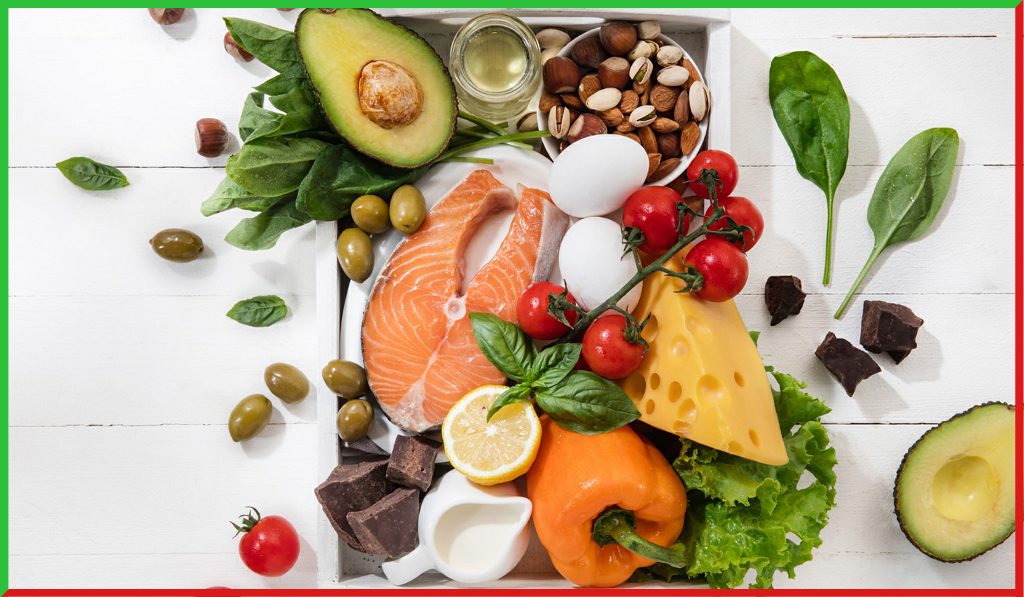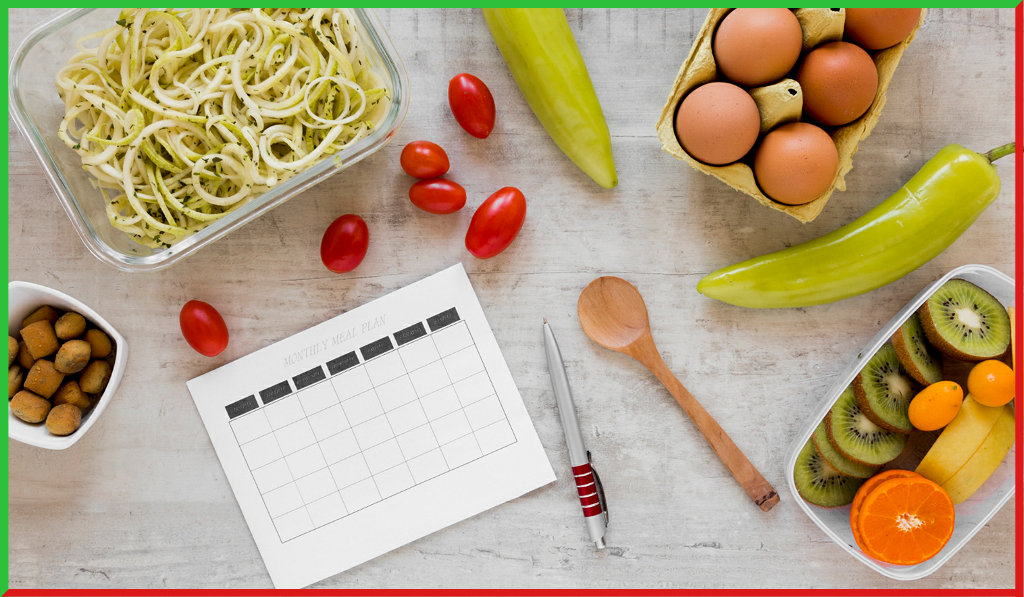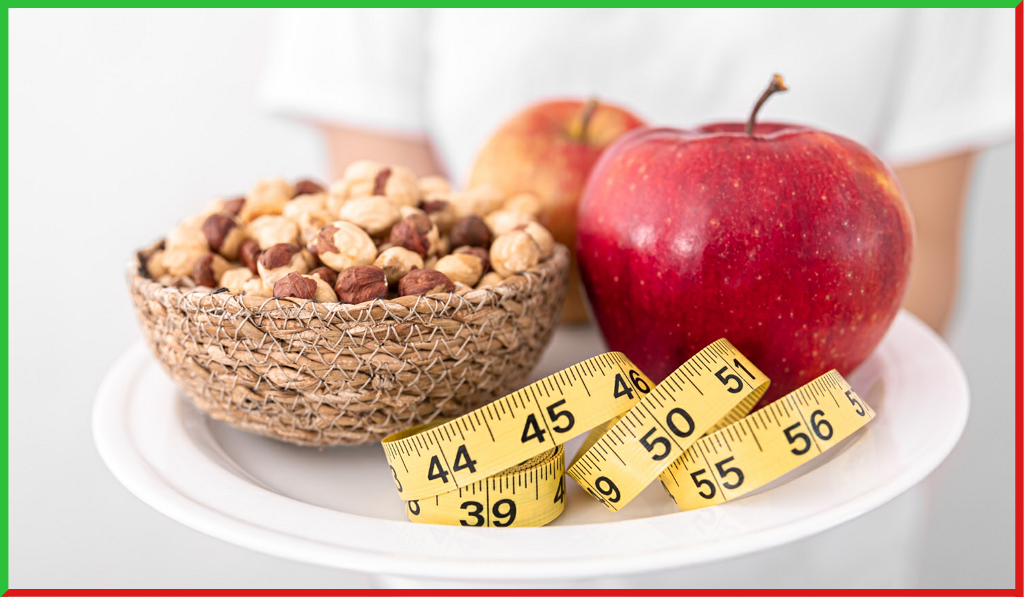Portion Control Secrets Unleashed: Your Path to Weight Loss

Welcome to a world where maintaining a balanced and healthy lifestyle is not just a dream, but an achievable reality! Are you ready to embark on a remarkable journey towards achieving your weight loss goals? Well, you're in the right place! Today, we're going to dive into the exciting realm of portion control and discover the secrets that will unleash your path to weight loss success.
Picture this: a plate filled with scrumptious food that not only satisfies your taste buds but also fuels your body with the perfect balance of nutrients. Sounds like a dream, doesn't it? Well, get ready to turn that dream into a reality! Portion control is the secret sauce that can revolutionize your weight management journey. But hold on, we're not talking about deprivation or strict dieting here.
In this article, we'll embark on an entertaining adventure that will uncover the mysteries of portion control and help you find the perfect balance between nutrition and portion sizes. It's time to break free from the shackles of confusing weight loss advice and embrace a method that actually works for almost everyone!
I. Understanding the Basics of Balanced Nutrition

To lead a healthy lifestyle, it's essential to have a good understanding of balanced nutrition. This article aims to shed light on the significance of macronutrients and their role in promoting overall well-being. We will explore three key elements: proteins, fats, and carbohydrates, and their impact on muscle development, satiety, overall health, and sustained energy.
A. The significance of macronutrients:
1. Proteins: Building Blocks for Muscles and Satiety
Proteins play a crucial role in our body's development and repair processes. They are often referred to as the building blocks of muscles. When we engage in physical activities, proteins help repair and build muscle tissue, aiding in strength and growth. Additionally, proteins contribute to a feeling of fullness, keeping hunger at bay.
2. Fats: Understanding the Importance of Healthy Fats
Contrary to popular belief, not all fats are bad for us. Healthy fats, such as monounsaturated and polyunsaturated fats, are essential for our well-being. They provide energy, aid in the absorption of fat-soluble vitamins, and support brain function. Healthy fats can be found in foods like avocados, nuts, seeds, and fatty fish. It's important to include them in our diet while being mindful of portion sizes.
3. Carbohydrates: Complex vs. Simple Carbs for Sustained Energy
Carbohydrates are a primary source of energy for our bodies. However, not all carbohydrates are created equal. Complex carbohydrates, found in whole grains, vegetables, and legumes, provide sustained energy due to their slow digestion and release of glucose into the bloodstream. On the other hand, simple carbohydrates, such as refined sugars and processed foods, can cause spikes in blood sugar levels, leading to energy crashes. It's wise to prioritize complex carbohydrates for long-lasting energy and overall health.
Understanding the basics of balanced nutrition is essential for leading a healthy lifestyle. Proteins support muscle development and help us feel satisfied, while healthy fats contribute to overall well-being. Differentiating between complex and simple carbohydrates enables us to make informed choices for sustained energy levels. By incorporating these macronutrients in appropriate proportions, we can optimize our nutrition and promote a healthier and more fulfilling life.
B. The recommended macronutrient proportions:
To maintain a balanced diet, it is generally recommended to consume approximately 30% of calories from proteins, 10% from fats, and 60% from carbohydrates. This balance ensures an adequate intake of essential nutrients and helps prevent extreme fluctuations in blood sugar levels.
Following these proportions has several benefits, including sustained energy throughout the day, improved satiety, better muscle development, and overall well-being.
C. Clarifying calorie content per gram of each macronutrient:
It's important to understand the calorie content of different macronutrients:
1. Proteins: Each gram of protein provides approximately 4 calories. This means that consuming 100 grams of protein would amount to around 400 calories.
2. Carbohydrates: Similar to proteins, carbohydrates also provide around 4 calories per gram. So, consuming 100 grams of carbohydrates would contribute roughly 400 calories to your daily intake.
3. Fats: Fats, on the other hand, are more calorie-dense, with approximately 9 calories per gram. Thus, consuming 100 grams of fats would account for around 900 calories.
By understanding the calorie content of each macronutrient, you can make informed decisions about portion sizes and maintain a balanced diet.
II. Calculating Calorie Requirements

When it comes to calculating calorie requirements for weight management, various methods exist. However, we'll focus on a simplified approach that is easy to understand and implement.
A. Caloric needs per kilogram of body weight:
To achieve your weight loss goals, it's important to determine the appropriate calorie range based on your body weight. Here are the recommended ranges:
- Fat loss:
Aim for 26-29 calories per kilogram of body weight. This range is suitable for individuals who want to shed excess fat and improve their body composition.
2. Weight maintenance:
If you're satisfied with your current weight and aim to maintain it, consume around 33-35 calories per kilogram of body weight. This range ensures that you provide your body with enough energy to sustain its functions without gaining or losing weight.
3. Weight gain:
For those looking to increase their weight, the recommended calorie intake is around 40-45 calories per kilogram of body weight. This range helps support muscle growth and overall weight gain.
B. Example calculation for a 100kg individual aiming for weight loss:
Let's illustrate the calorie calculation process using an example of an individual weighing 100 kilograms who wants to lose weight.
Considering the fat loss range of 26-29 calories per kilogram, we can calculate their calorie requirements as follows:
26 calories/kg * 100 kg = 2600 calories per day (minimum range)
29 calories/kg * 100 kg = 2900 calories per day (maximum range)
For effective weight loss, it's recommended to aim for the lower end of the calorie range. Therefore, our example individual should consume approximately 2600 calories per day.
To maintain the balanced proportions of macronutrients (protein, fat, and carbohydrates) mentioned earlier (30%-10%-60%), they would need to distribute these calories accordingly:
- Proteins (30%): 780 calories or approximately 195 grams per day.
- Fats (10%): 260 calories or approximately 29 grams per day.
- Carbohydrates (60%): 1560 calories or approximately 390 grams per day.
Remember that these calculations are based on dry food weights. When it comes to actual food products, it's essential to consider the nutrient content percentages specified on the packaging. Adjust your food intake accordingly to meet these macronutrient targets.
III. Translating Caloric Goals into Macronutrient Portions

A. Applying the recommended macronutrient proportions:
To achieve a balanced diet, it's important to calculate the appropriate amounts of proteins, fats, and carbohydrates based on your calorie target. Remember the recommended proportions: 30% protein, 10% fat, and 60% carbohydrates.
1. Calculating protein requirements:
Start by determining your protein intake based on your calorie target. Remember that 1 gram of protein contains 4 kilocalories. Divide your protein calories by 4 to get the corresponding protein amount in grams.
2. Determining fat and carbohydrate portions:
Next, calculate your fat and carbohydrate portions based on the remaining calorie percentages. Remember that 1 gram of fat contains 9 kilocalories, and 1 gram of carbohydrate contains 4 kilocalories. Divide the fat and carbohydrate calories by their respective values to determine the grams of fat and carbohydrates you should consume.
B. Clarifying the difference between gram measurements of nutrients and food products:
It's important to understand that when we talk about grams of proteins, fats, and carbohydrates, we are referring to the nutrient content, not the weight of the actual food products. Each food product contains different percentages of these nutrients.
1. Illustrating with an example of rice and its carbohydrate content:
Let's take rice as an example. If a rice package contains 76 grams of carbohydrates per 100 grams of rice, then the recommended daily amount of rice for carbohydrates would be calculated as follows: Divide the total daily carbohydrate intake (in grams) by the percentage of carbohydrates in rice and multiply by 100.
2. Highlighting the need for adjusting portion sizes based on nutrient percentages:
It's important to adjust your portion sizes based on the nutrient percentages mentioned earlier. Remember that the weight of the food product may differ from the actual nutrient content. Keep in mind that the calculations mentioned earlier are based on dry product weight.
IV. Factors Influencing Individual Caloric Needs

A. Recognizing the impact of genetics and metabolism:
When it comes to caloric needs, it's important to understand that different individuals may require varying calorie intakes. Genetics and metabolism play a significant role in determining how our bodies process and utilize energy. This means that what works for one person may not work for another.
To illustrate this point, let's consider two individuals with diverse metabolic rates. In the gym, you might come across a muscular person weighing around 100 kilograms who maintains their physique on a relatively low-calorie intake of 2,500 calories. On the other hand, there could be a lean, younger individual of the same weight who struggles to gain weight even with a higher calorie intake of 4,000 calories. These examples highlight the individual variations in metabolic rates and the impact they have on caloric needs.
B. Considering additional factors:
Aside from genetics and metabolism, there are other factors that influence our caloric needs. Age, physical activity levels, and overall health are important contributors to determining how many calories we should consume. As we age, our metabolic rate tends to slow down, requiring adjustments in our nutritional plans. Similarly, individuals who engage in regular physical activity or have specific health conditions may have higher or lower caloric needs.
It's crucial to understand that personalized adjustments are necessary when it comes to nutritional plans. Each person is unique, and there is no one-size-fits-all approach to determining caloric needs. A comprehensive understanding of factors such as genetics, metabolism, age, physical activity, and overall health allows for a more tailored approach to achieve optimal results.
V. The Importance of Monitoring and Adjusting

A. Emphasizing the necessity of self-monitoring:
When it comes to achieving your weight loss goals, self-monitoring is key. It's crucial to track your progress and adjust along the way. By actively participating in your weight management journey, you take control of your success.
B. Introducing a practical method:
To make the process easier, here's a practical method you can follow:
1. Step 1: Calculate baseline indicators:
Begin by determining your baseline indicators, such as your current weight and body mass index (BMI). These measurements serve as a starting point for your weight loss journey.
2. Step 2: Implement regular meals with balanced macronutrient proportions:
Structure your meals in a way that incorporates balanced macronutrient proportions. Remember the ratio: 30% protein, 10% fat, and 60% carbohydrates. This balanced approach ensures that your body receives the nutrients it needs while avoiding blood sugar spikes and unnecessary components.
3. Step 3: Evaluate progress after two weeks and make necessary adjustments:
After following the plan for two weeks, evaluate your progress. Take note of any changes in your weight, energy levels, and overall well-being. If needed, make adjustments to your portion sizes or macronutrient ratios to better align with your goals. Keep in mind that everyone's body is unique, so finding the right balance may require some trial and error.
Remember, self-monitoring allows you to understand how your body responds to different strategies. By actively participating and making necessary adjustments, you'll be on the path to successful weight management. Stay dedicated and keep working towards your goals!
Conclusion:

In conclusion, we have explored the secrets of portion control and its significance in achieving weight loss goals. By understanding the importance of balanced nutrition and portion sizes, you are empowered to take control of your eating habits and embark on a successful weight management journey.
Remember, there is no one-size-fits-all approach when it comes to nutrition and weight loss. Embrace a personalized approach that suits your unique needs and preferences. Consistency is key, so make sure to maintain healthy eating habits over time.
By finding the perfect balance between portion control and nutritious choices, you can reap long-term benefits for your overall health and well-being. Sustainable weight management is not about quick fixes or fad diets; it's about making conscious decisions that support your goals.
So, take charge of your eating habits, be mindful of your portion sizes, and enjoy a balanced and healthy lifestyle. With dedication and perseverance, you can achieve weight success and embrace a happier, healthier you. Remember, it's all about finding your own path and creating sustainable habits that work for you. Good luck on your journey to a healthier future!
#weightloss #weightlossjourney #healthylifestyle #diet #healthyfood #weightlosstransformation #nutrition #fatloss #healthyeating #slimmingworld #weightlossmotivation #transformation #keto#healthyliving #wellness #weightwatchers #losingweight #weightlosstips
HealthYou may be interested in these jobs
-

Event Coordinator
Found in: ZipRecruiter Standard US C2 - 1 day ago
Chefs Delights Catering Inc Miami, United StatesJob Description · Job DescriptionCalling all foodies We are seeking an Event Coordinator/Customer Service Associate to join our team You will be responsible for organizing events from conception through completion. At Chef's Delights Catering we offer a great working environment ...
-

PT Pharmacy Technician Certified
Found in: Lensa US P 2 C2 - 3 days ago
Stop & Shop Wallingford, United StatesAt Stop & Shop, we are dedicated to creating and maintaining a culture where the diverse backgrounds and experiences of our associates are celebrated, and all associates feel they belong and thrive. We work as one team to break down barriers, put the customer first and show that ...
-
Local Driver
Found in: Lensa US 4 C2 - 3 days ago
Southwestern Motor Transport Amarillo, United States**Location:** Amarillo, TX * Perform pre and post trip inspections on company vehicles as required and ensure their safe operation. All issues must be reported as required · Fuel tractor · Pick up & deliver freight in a timely & safe manner · Inspect & count freight to determi ...

Comments